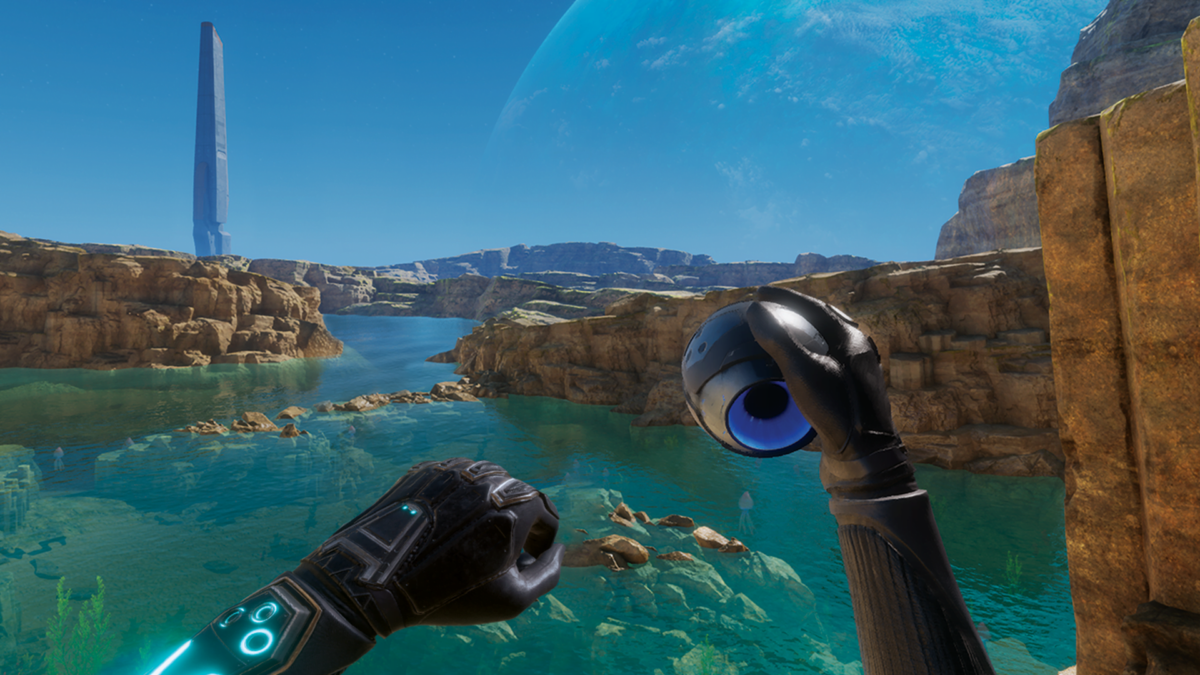OpenXR Toolkit improves Quest Pro's PC graphics via eye tracking

The OpenXR Toolkit now supports eye-tracking for PC VR games with the Quest Pro. Foveated rendering allows for more details.
PC VR games can now benefit from the eye tracking of the Meta Quest Pro (review). The Open XR Toolkit now supports this feature in PC apps when the headset connects wirelessly to the computer via Air Link (guide).
This enables "Dynamic Foveated Rendering" in supported VR games. This approach renders the scenery in full detail only where a player looks while other areas remain less detailed. This saves computing power for the focused image sections or a higher frame rate. The Playstation VR 2 (review) also uses this technology for graphically complex games.
Foveated rendering for the Quest Pro on the PC
Supported PC VR games include the graphically complex shooter Hubris, role-playing game The Light Brigade, and racing simulation iRacing. All could benefit from more detail in the focal area.
Some titles still struggle with the technology. In Microsoft's Flight Simulator, Dynamic Foveated Rendering results in a blurry main menu; in War Thunder, "Easy Anti-Cheat" prevents it from being used. However, the mod community Flat2VR already presents successful experiments with the upcoming Unreal Engine VR mod by Praydog on their Twitter page.
🔥 Quest Pro Eye Tracked Foveated Rendering 🔥
OpenXR Toolkit is an amazing tool that adds eye tracked foveated rendering (along with color adjustments, sharpening & more) on different supported headsets for OpenXR games.
Here's a quick test using it on https://t.co/R9zczvQeVb… pic.twitter.com/dTQ5tHeFOh
— Flat2VR (@Flat2VR) February 23, 2023
To use this feature on the Quest Pro, it is important to use the official Oculus runtime. If you choose SteamVR as the OpenXR runtime instead (for Virtual Desktop, for example), you will not be able to use the Quest Pro's eye tracking in PC applications.
Another important prerequisite for the feature in the Oculus software is that the "Eye tracking via Oculus Link" checkbox is enabled in the beta section. The option "Developer Runtime Features" must also be active.
Some titles that use the older OpenVR will also be compatible via "OpenComposite", including American Truck Simulator 2, Elite Dangerous, F1 22, Pavlov VR, and Subnautica.
Some other VR headsets have supported eye-tracking in the OpenXR Toolkit for some time, such as Varjo headsets and the HP Reverb G2 Omnicept Edition (review). Many of them, even work with SteamVR as their runtime environment already.
The OpenXR Toolkit is technically a layer of an application programming interface (API). This creates an intermediate step between the game and the OpenXR runtime environment, which communicates with the operating system, drivers, and VR compositor.
Note: Links to online stores in articles can be so-called affiliate links. If you buy through this link, MIXED receives a commission from the provider. For you the price does not change.